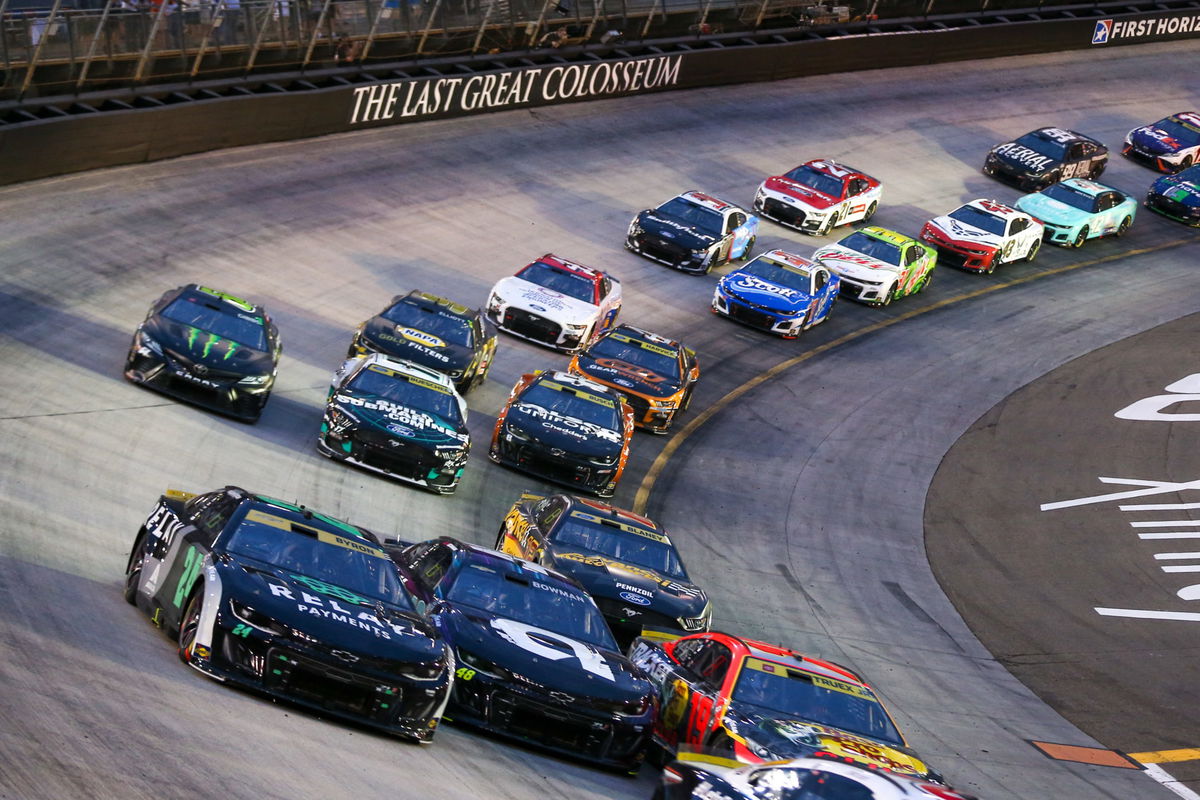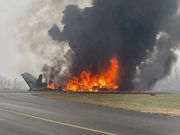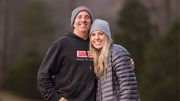
USA Today via Reuters
Sep 16, 2023; Bristol, Tennessee, USA; NASCAR Cup Series driver William Byron (24) and driver Martin Truex Jr. (19) and driver Alex Bowman (48) during the Bass Pro Shops Night Race at Bristol Motor Speedway. Mandatory Credit: Randy Sartin-USA TODAY Sports

USA Today via Reuters
Sep 16, 2023; Bristol, Tennessee, USA; NASCAR Cup Series driver William Byron (24) and driver Martin Truex Jr. (19) and driver Alex Bowman (48) during the Bass Pro Shops Night Race at Bristol Motor Speedway. Mandatory Credit: Randy Sartin-USA TODAY Sports
In the early days of NASCAR, racing was a test of endurance and speed where drivers’ sole aim was to push the car to the fullest. The idea of pausing mid-race seemed counterintuitive, but as the sport grew, the need for pit stops started rising. Before the 1950s, the races were merely a 100-mile dash, which didn’t require a pit stop.
Watch What’s Trending Now!
However, as time progressed, and so did the track length, it became incomprehensible for the teams to complete the race without halting the car for gas and tires. Yet, many failed to take note of the need for an efficient pit stop, and the brothers who did, changed the dynamics of pit stops forever.
ADVERTISEMENT
Wood brother’s improvisation that turned the tables around
Back in the 1960s, technological advancement wasn’t much. So, to communicate with their drivers, the teams held blackboards with key metrics written on them, like their lap time, number of laps remaining, and many other valuable insights.
But it was the pit stop that probably lacked importance back in those days as they were too slow and not many seemed to bother about it. But Wood Brothers Racing owners, Leonard and Glen Wood had different thoughts about pit stops and made some striking observations, which proved to be a massive success.
Sharing his observations with the world, Glen opened up about the time-consuming pitstops in a NASCARAllOut video on YouTube and said, “We had one of the best crews at that time, that’s back in the 60s and 70s. In the first World 600, first race at Charlotte, Fireball Roberts’ crew, I believe it was 45 seconds it took them to change two tires and gas. It’s just plain as it could be that you’re losing so much time there.”
ADVERTISEMENT
Following his brother’s insight, Leonard revealed about finding a major gap in pit stops and using it for their team’s advancement, and said, “So we realized it was something to be gained. We began working at it right away. We was down like 25 seconds.”
Leonard then categorized the time spent on different circuits of the pit stop and revealed, “What you did was you improve the socket to where that it would slide on the lug faster with a spring in it, improve the gas flow so the gas go in, and then the jack took about 12 pumps to pump it up. We speed the jack up so you could get it up about 3.” While the Wood brothers’ pit stop actions were heavily appreciated in their time, some also earned a reputation for being a possible “show-off” move.
ADVERTISEMENT
Further elaborating on his famous leaping action at the end of a pit-stop that gained notoriety, Leonard Wood said, “I would come back in the front of the car and kind of leap to the other side, you know. I wasn’t showing off. I gained 2 seconds getting back over. That’s just how quick the car would leave.”
ADVERTISEMENT
In the 1960s, the Wood brothers saw the hidden opportunity beneath to dominate the tracks and grabbed it. But what caused such slow pit stops, despite numerous tools at the crew’s disposal?
ADVERTISEMENT
Top Stories
Greg Biffle Plane Tragedy: What Might Have Caused the Crash That Killed the NASCAR Champ and His Family

“The Biff”: NASCAR Fans Push for Legacy-Defining Award Named After Greg Biffle Following His Tragic Death

Footage Surfaces of Florida Police Arresting NASCAR Veteran Over Disturbing Public Misbehavior

Who Is Greg Biffle’s Wife? Everything You Need to Know About Cristina Grossu

Richard Childress’ Grandson to Be the ‘First Casualty’ of RCR-Kaulig Racing Divorce, Claims Dale Jr.

The old-school pit stop that became costly for the teams
When the Southern 500 at Darlington Raceway entered the NASCAR scene in the 1950s, running without a pit stop for 500 miles was simply not viable. But even when teams were taking a shot at the newly introduced layovers, the time it consumed was certainly not doing them any good.

USA Today via Reuters
Sep 15, 2023; Bristol, Tennessee, USA; NASCAR fans watch from the pits during practice for the Bass Pro Shops Night Race at Bristol Motor Speedway. Mandatory Credit: Randy Sartin-USA TODAY Sports
Stretching to over 45 seconds in some cases, these long and tedious pit stops were a worrying aspect in a sport where the outcome of the race could even be changed by just a fraction of a second. One of the major reasons behind the delay was the old four-way tire wrenches which took nearly a minute to change a single tire. So, for all four tires, it would be way too long to wait in the pit lane.
ADVERTISEMENT
As the years went by, the advent of pneumatic air guns and other technological advancements came into NASCAR. And decades later, in 2021, the importance of a fast pit stop was heavily highlighted when Kyle Larson‘s #5 crew pushed the driver to his first NASCAR Cup Series title with a lightning fast 11.8 second layover. So, the value that a pit stop holds is priceless. Speaking of the current NASCAR scene, the NextGen cars run at the same level of specifications, so a pit stop becomes an essential part where the teams can turn the race in their favor.
Watch This Story: Dale Earnhardt’s legacy revived on the streets
ADVERTISEMENT
So, it is safe to say that the pit stop scene in NASCAR, or any other racing sport for that matter, has become one of the prime aspects, having a major contribution to the driver’s race outcome.
ADVERTISEMENT
ADVERTISEMENT
ADVERTISEMENT

